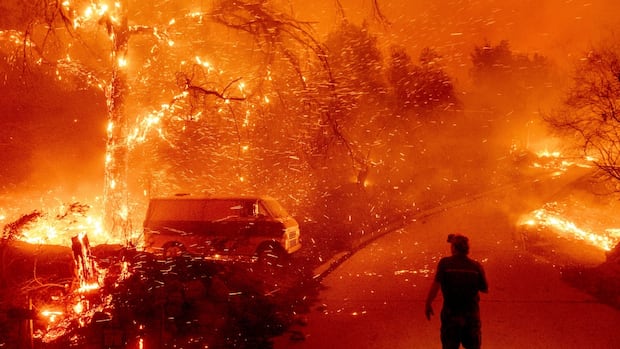The blanket of acrid smoke currently smothering Los Angeles serves as a stark reminder of a growing public health crisis that extends far beyond the visible flames. As residents don masks and retreat indoors, the Mountain Fire’s sprawling impact represents just one episode in what experts are calling a troubling new normal for urban populations across North America.
“What we’re seeing in Los Angeles right now is the visible manifestation of a much larger problem,” says Dr. Sarah Coburn, environmental health scientist at the University of California. “The particulate matter in wildfire smoke is exceptionally dangerous because it’s so fine it can penetrate deep into the lungs and even enter the bloodstream.”
Recent research published in the New England Journal of Medicine suggests the health impacts of wildfire smoke are substantially more severe than previously understood. A comprehensive Canadian study tracked excess deaths during periods of intense smoke exposure and found alarming results: for every 10 μg/m³ increase in PM2.5 concentration, all-cause mortality increased by approximately 0.8 to 2.4 percent.
These findings align with what health officials are now observing in real-time across affected regions. The most vulnerable populations—children, the elderly, pregnant women, and those with pre-existing respiratory or cardiovascular conditions—face the greatest risks. However, emerging evidence indicates even healthy adults experience significant effects from prolonged exposure.
“The misconception that staying indoors completely protects you is dangerous,” warns respiratory specialist Dr. James Mitchell. “Without proper air filtration systems, fine particulate matter infiltrates homes, especially older buildings with poor sealing.”
The economic toll compounds the health crisis. A report from the Federal Reserve Bank of San Francisco estimates that smoke-related health costs and productivity losses now exceed $150 billion annually across North America—a figure that has tripled over the past decade as wildfires have grown in frequency and intensity.
Climate scientists point to a troubling feedback loop. “As temperatures rise and drought conditions persist in the western United States and Canada, the wildfire season extends and intensifies,” explains climate researcher Dr. Elena Patel. “This creates more smoke, which contains black carbon that further contributes to warming.”
Public health agencies are scrambling to develop more robust response protocols. The CDC recently updated its guidance on wildfire smoke protection, emphasizing that cloth masks offer minimal protection against the finest particles. Only properly fitted N95 respirators filter effectively, though availability remains a challenge during peak fire seasons.
Municipal governments across North America are increasingly establishing “clean air shelters” equipped with medical-grade filtration systems. Los Angeles County opened twelve such facilities this week, providing refuge for residents without access to air conditioning or proper filtration.
The situation demands both immediate adaptation and long-term solutions. Forest management practices are being reevaluated, with controlled burns during favorable conditions increasingly recognized as necessary despite their temporary air quality impacts.
As the Mountain Fire continues to blaze, the invisible toll grows. The question confronting policymakers and citizens alike is increasingly urgent: how do we balance the immediate need for protection with the systemic changes required to address the root causes of our increasingly smoke-filled world?










